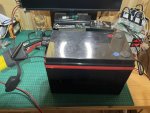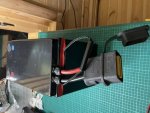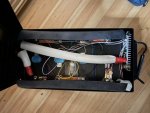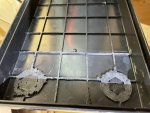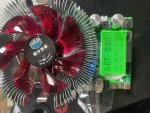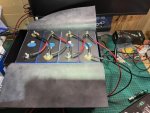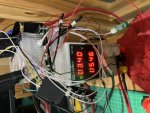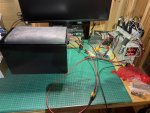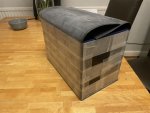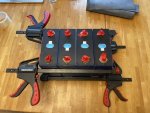gregcope
Well-known member
Hi All
I thought I would document my Lithium build and share. This thread is inspired by Poey50’s thread. Thank you @Poey50!
Our sailing is coastal and we like nothing more than staying at anchor for days, exploring and relaxing. We had 250Ah of cheap Flooded Lead Acid house batteries and 360W of Solar, a usable capacity of 125Ah. If it is sunny we are self sufficient, just. Our main consumers are the fridge, charging iDevices add instruments & ram autohelm when sailing. Even with everything on we seem to only draw about 30A, mostly it is around 10A when sailing and 4A ish when just the fridge. Usual draw is around 30Ah per day. I wanted to increase capacity to cover grey days as well as more laptop use (WFB; Work From Boat!). I was going to add another 125Ah FLA.
I have been looking at Lithium for nearly two years as it seems to offer many advantages;
Things came to a head this year when one of our house 125Ah FLA cooked itself. I decided to go to LifePo4. There are various different decisions to make. Drop in replacement vs DIY; Which cells; Which Battery Management System (BMS); How to deal with the Alternator ; Charge profiles and where to get it all from.
I thought I would document my Lithium build and share. This thread is inspired by Poey50’s thread. Thank you @Poey50!
Our sailing is coastal and we like nothing more than staying at anchor for days, exploring and relaxing. We had 250Ah of cheap Flooded Lead Acid house batteries and 360W of Solar, a usable capacity of 125Ah. If it is sunny we are self sufficient, just. Our main consumers are the fridge, charging iDevices add instruments & ram autohelm when sailing. Even with everything on we seem to only draw about 30A, mostly it is around 10A when sailing and 4A ish when just the fridge. Usual draw is around 30Ah per day. I wanted to increase capacity to cover grey days as well as more laptop use (WFB; Work From Boat!). I was going to add another 125Ah FLA.
I have been looking at Lithium for nearly two years as it seems to offer many advantages;
- More usable capacity (80-90%) compared to FLA (50%).
- Much better charging efficiency compared to FLA; 99% compared to 85%. Ie if you put 20A in, that is what the battery can give back. Compared to FLA that will only give back 16A.
- Low internal resistance that allows LifePo4 to accept lots of amps (ie 0.5C, or around 152A for 304Ah cells)
- Not having the 80%+ SOC drop in charge rate that FLAs have. This and the ones above effectively means any charging (like Solar) becomes much more effective.
- Much higher energy density (smaller and lighter than FLA); 250Ah of FLA is 56Kg, 304Ah of LifePo4 is 16Kg and half the volume.
- Much longer life (with care well over 10years+) compared to 6 years (ish) with FLA.
- Prices appear to be comparable, or cheaper for capacity over lifetime now.
- Often higher initial cost.
- If going DIY risks of purchasing from dubious sellers.
- DIY assembly mistakes.
- Most charging and monitoring sources need review and reconfiguring or changing.
- Issues with Alternator and BMS disconnect.
- Battery complexity & reliability could be an issue.
- Cells are fragile and affected by temperature. For example charging below 0c will severely damage them. Along with over / under charging.
- Cell life is affected by warmth, even 45c affects life.
Things came to a head this year when one of our house 125Ah FLA cooked itself. I decided to go to LifePo4. There are various different decisions to make. Drop in replacement vs DIY; Which cells; Which Battery Management System (BMS); How to deal with the Alternator ; Charge profiles and where to get it all from.

